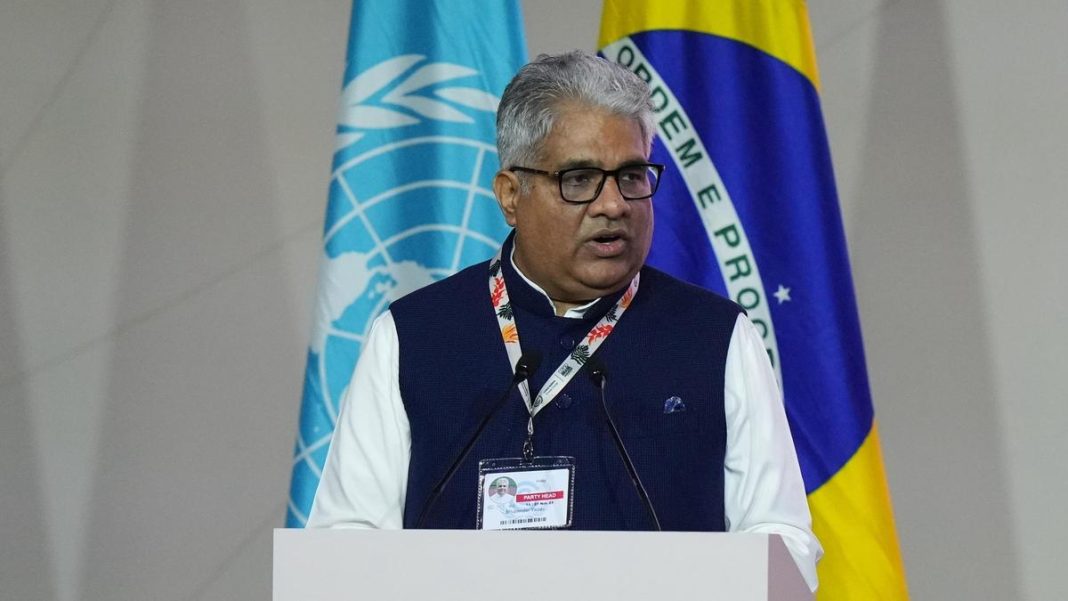India, a nation at the confluence of rapid economic development and significant climate vulnerability, is poised to make a crucial statement on the global environmental stage. Union Minister for Environment, Forest, and Climate Change, Bhupender Yadav, recently announced that India would submit its updated Nationally Determined Contributions (NDCs) to the United Nations Framework Convention on Climate Change (UNFCCC) by the end of December. This move signals India’s enhanced commitment to combating climate change and underscores its evolving role in shaping global climate policy, even as it balances the imperative of growth for its vast population.
India’s Evolving Climate Ambition and Progress
Nationally Determined Contributions are at the heart of the Paris Agreement, representing each country’s voluntary efforts to reduce national emissions and adapt to the impacts of climate change. India’s original NDCs, submitted in 2015, committed to three key targets by 2030:
- To reduce the emissions intensity of its GDP by 33 to 35 percent from 2005 levels.
- To achieve about 40 percent cumulative electric power installed capacity from non-fossil fuel-based energy resources.
- To create an additional carbon sink of 2.5 to 3 billion tonnes of CO2 equivalent through additional forest and tree cover.
Significantly, India has made remarkable progress towards these goals. The country has already exceeded its target for non-fossil fuel-based energy capacity, with renewable energy installations soaring. By 2021, India’s non-fossil fuel-based installed energy capacity stood at over 157 GW, representing 40.1% of its total capacity, comfortably surpassing the 2030 target. Furthermore, its emissions intensity is also on track for substantial reduction. This proactive approach, often ahead of schedule, positions India favorably to present more ambitious targets.
Speaking on the upcoming submission, Bhupender Yadav emphasized India’s consistent efforts. “India has consistently demonstrated its commitment to climate action, often exceeding its initial targets. The submission of updated Nationally Determined Contributions by December end is a testament to our enhanced ambition and our dedication to a sustainable future, while also upholding the principle of common but differentiated responsibilities,” stated the Union Minister, highlighting India’s nuanced yet firm stance on climate equity.
What Might the Updated NDCs Entail?
The decision to update NDCs comes in the wake of the COP26 summit in Glasgow, where nations were urged to strengthen their climate commitments. While the specifics of India’s updated targets remain under wraps until the official submission, several areas are likely candidates for enhanced ambition:
- Increased Emissions Intensity Reduction: Given the progress already made, India might commit to a higher percentage reduction in its emissions intensity of GDP from 2005 levels.
- Higher Renewable Energy Targets: Building on its success, India could further increase its target for non-fossil fuel-based electricity capacity, potentially setting an even higher percentage or absolute GW target. The Prime Minister’s announcement of 500 GW renewable energy capacity by 2030 at COP26 provides a strong indicator for this.
- Focus on Specific Sectors: There could be clearer roadmaps or targets for decarbonizing hard-to-abate sectors like industry and transport, potentially through promoting electric vehicles, green hydrogen, and energy efficiency across the board.
- Enhanced Carbon Sink Efforts: While forest and tree cover targets are often long-term, India might outline more aggressive afforestation and reforestation programs, leveraging initiatives like the National Green Mission.
It is also crucial to remember India’s overarching ‘Panchamrit’ (five nectar elements) pledges made at COP26, which include achieving net-zero emissions by 2070. The updated 2030 NDCs will likely serve as critical stepping stones towards this ambitious long-term goal, demonstrating a clear trajectory for climate action.
India’s Global Leadership and the Path Ahead
By submitting enhanced NDCs, India reaffirms its commitment to be a responsible global citizen in the fight against climate change. This move is particularly significant given India’s status as the world’s third-largest emitter, albeit with much lower per capita emissions than many developed nations. Its actions have ripple effects, inspiring other developing countries to strengthen their climate pledges while continuously advocating for equity and climate justice.
The updated targets will undoubtedly face scrutiny, both domestically and internationally. The challenge for India remains balancing its developmental needs – providing energy access, alleviating poverty, and fostering economic growth for its 1.4 billion people – with its environmental responsibilities. However, by proactively enhancing its NDCs, India demonstrates its belief that sustainable development is not just possible but essential. The world will watch keenly as India unveils its enhanced climate blueprint, setting a critical precedent for global climate action in the coming decade.




